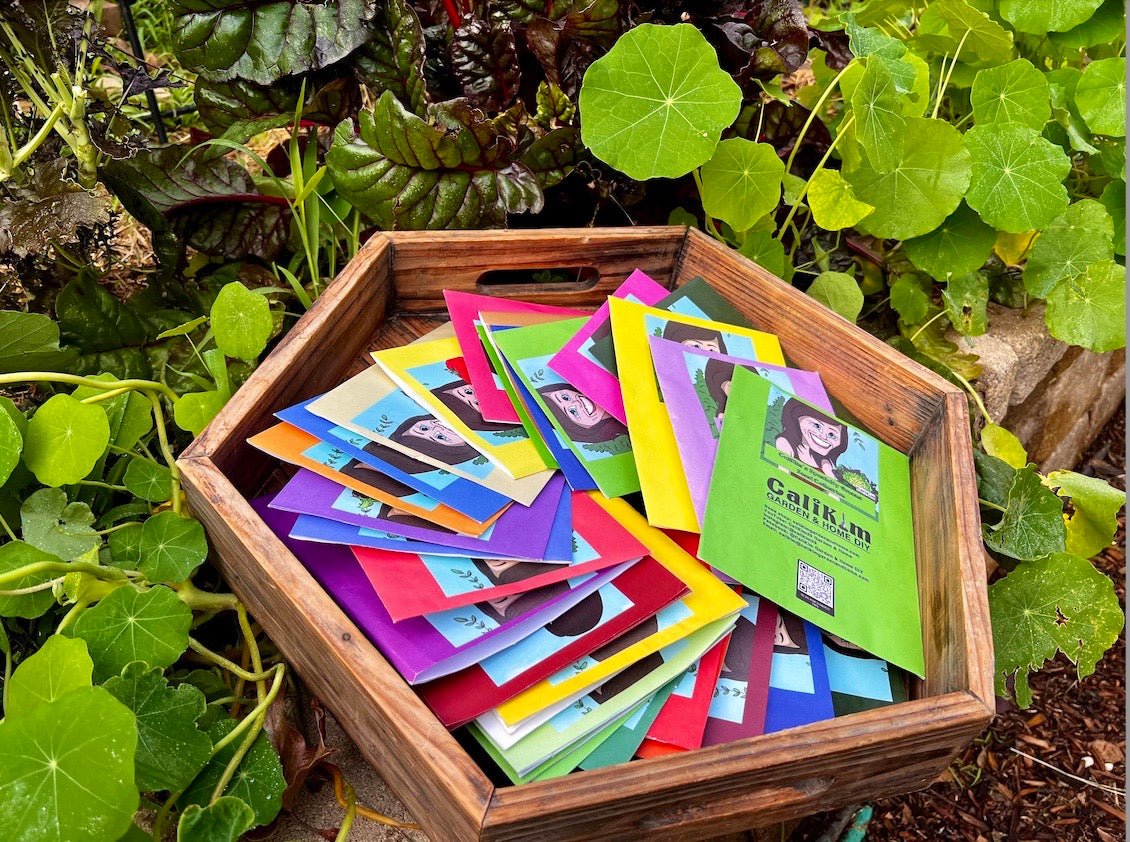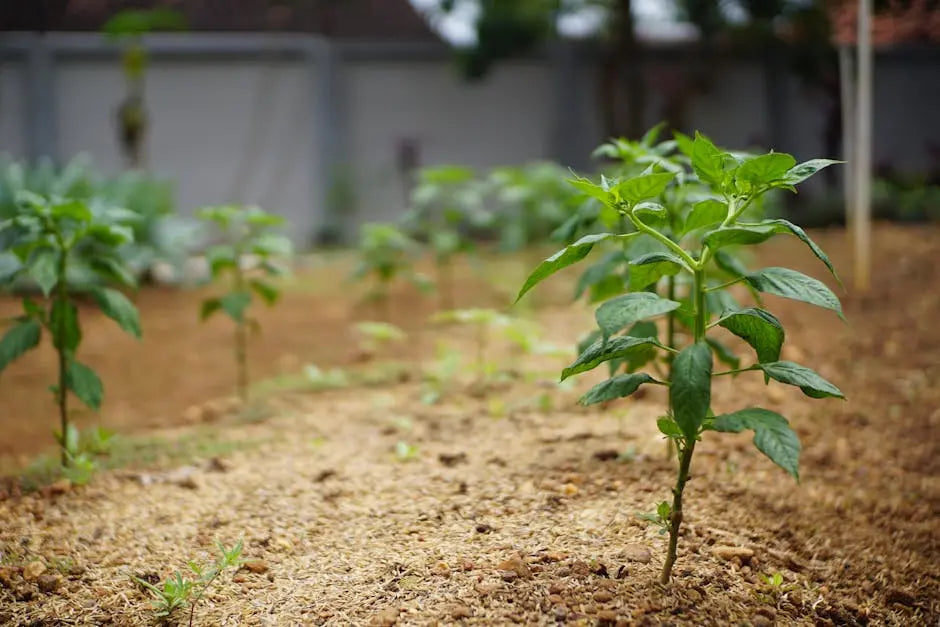Vertical gardening is a fantastic way to maximize space while growing your favorite plants. But did you know that organic seed collections can take your vertical garden to the next level? Here are some innovative ways you can use them to create a thriving green oasis. 
1. Creating a Pollinator Paradise
Incorporating organic seed collections designed to attract pollinators can transform your vertical garden into a haven for bees, butterflies, and other beneficial insects. Imagine watching vibrant flowers bloom while busy bees flit from petal to petal. What’s more, adding a variety of flowering plants can ensure a continuous source of nectar. Not all pollinator-friendly plants bloom at the same time, so a strategic selection from your organic seed collection can keep those winged friends coming back for more!
As you plan your vertical garden, consider including herbs like lavender and mint, which offer not only beautiful blooms but also fragrant aromas. These herbs attract both pollinators and gardeners alike! Additionally, incorporating native plants from your organic seed collection can create habitats for local pollinators, promoting biodiversity in your garden. A well-planned pollinator paradise not only benefits your plants but enriches the overall ecosystem, making your vertical garden a thriving back-to-nature retreat.
2. Herb Walls for Culinary Delights
Imagine having fresh herbs at your fingertips. Grow a vertical herb wall using assorted organic seed collections to enhance your cooking and elevate your dishes. Not only does this innovative gardening method provide easy access to a variety of herbs, but it also adds a refreshing scent to your home. Start with popular choices like basil, cilantro, and parsley. These herbs thrive in vertical setups and are sure to invigorate your kitchen!
Furthermore, consider experimenting with less common herbs like lemon balm or chervil from your organic seed collections. These add unique flavors to your meals and can impress your dinner guests! A vertical herb wall can be created in small spaces, even indoors, and is beneficial for enhancing air quality. With a little creativity, you can create a stunning display and a delicious culinary resource right in your home.
3. Colorful Edible Displays
Mixing colorful organic vegetables and flowers can create stunning visual displays. Use vertical gardening to showcase the beauty and variety of edible plants. Imagine cascading vines of tomatoes interspersed with bright nasturtiums or climbing beans accentuated with purple flowers. Each plant adds a splash of color and texture, making your vertical garden a feast for the eyes as well as for the stomach!
Moreover, encouraging diversity through your organic seed collections means you can enjoy a wide range of flavors and textures. Consider layering your garden for an eye-catching result! For instance, place taller plants at the back and shorter ones at the front. This not only maximizes space but also creates depth and dimension. As the seasons change, so too will your colorful edible displays, providing ongoing joy and surprise throughout the year.
4. Space-Saving Microgreens
Organic seed collections focused on microgreens can be grown vertically, providing nutritious greens in just a few weeks while requiring minimal space. Microgreens are packed with flavor and nutrients, making them perfect for salads and garnishes. They thrive in small containers, allowing you to fit them into nearly any nook of your home or garden. Even a small balcony can showcase an impressive array of vitamins!
As you cultivate microgreens, consider rotational planting from your organic seed collection. This technique not only maximizes yield but also keeps your meals fresh and varied. With weekly harvests, your microgreens will continuously supply delicious flavors, encouraging a healthier diet. Plus, they are often foolproof for beginners, making any vertical garden a great canvas for experimentation.
5. Vertical Planters for Limited Spaces
If you’re short on ground space, vertical planters filled with organic seeds can bring life to patios, balconies, and small yards. These planters make use of vertical space, allowing plants to thrive without taking over precious ground real estate. You can stack pots, hang shelves, or even create a cozy trellis system to support climbing plants. The beauty of vertical gardening is that it encourages creativity while maximizing your growing potential!
Moreover, consider specific combinations of plants from your organic seed collection. Pair fast-growers with slower ones for staggered harvests. Herbs can share space with strawberries while vibrant flowers add charm and appeal. These vertical planters don’t just save space – they create lush green spaces that can make any outdoor or indoor area feel serene. A small garden can flourish, proving that even the tiniest spaces can cultivate a bountiful harvest!
6. Creative Seed Bombs for Fun Gardening
Make seed bombs with your organic seed collections to spread greenery in urban areas and engage children in a fun gardening activity. This hands-on experience not only teaches kids about types of plants but also fosters a love for nature and gardening. Plus, seed bombs are an exciting way to beautify your neighborhood by throwing them in vacant lots or neglected spaces!
To create seed bombs, simply combine your favorite seeds with clay, compost, and water to form small balls. Once they dry, they can be tossed anywhere you’d like to see blooms! This method allows anyone, regardless of gardening skill, to join in on the green movement. It’s impactful, playful, and connects communities with the earth. Let’s bring the beauty of organic seed collections to every corner of our cities!
7. Seasonal Gardening Made Easy
Organize your organic seed collections by season, enabling you to rotate and grow your vertical garden throughout the year without hassle. With this system, you’ll ensure that your garden is always filled with fresh produce and beautiful blooms. Start by planning which seeds will thrive in each season — cool-season crops in spring and fall, and warm-season choices in summer.
Moreover, grouping your seeds allows for easier maintenance and watering schedules tailored to each plant’s needs. Seasonal planning can transform your gardening experience into an efficient routine rather than a chore. It creates a sense of anticipation as each new planting phase approaches, ensuring that your vertical garden remains dynamic and vibrant all year round!
8. Teaching Tools for Kids
Use organic seed collections as an educational tool for kids, teaching them about plant life cycles, sustainability, and healthy eating through hands-on gardening. This engaging approach not only stimulates young minds but cultivates responsible habits for the future. By letting them plant seeds, tend to plants, and watch their growth, children learn valuable lessons that stick with them long after the gardening session is over.
Incorporating fun activities like creating seed journals, measuring plant growth, or even cooking with the harvest can make gardening a multifaceted educational experience. An organic seed collection can reflect a world of diversity, showcasing different plants and teaching respect for nature. This hands-on experience celebrates the journey from seed to plate, fostering a lifelong appreciation for gardening and healthy food choices!





